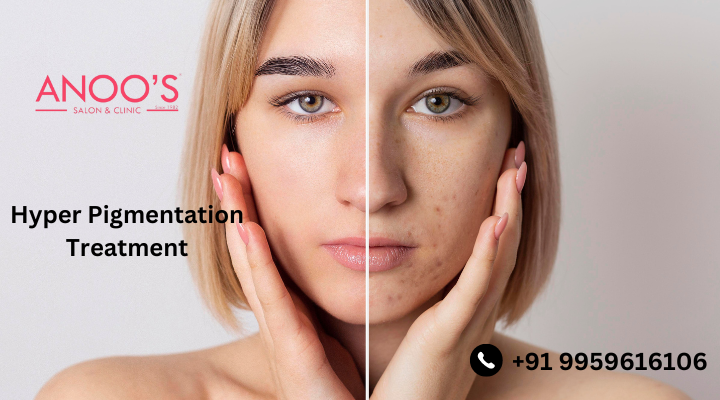
Pigmentation is the coloring of the skin, hair, and eyes. It is determined by the amount and type of pigment cells (melanocytes) present in the skin. The pigment cells produce a pigment called melanin, which gives color to the skin, hair, and eyes.
There are two main types of pigmentation: hypopigmentation and hyperpigmentation. Hypopigmentation is when there is a deficiency or loss of pigment in the skin, resulting in lighter-than-normal skin color. This can be caused by various factors, such as certain medical conditions, certain medications, or physical trauma to the skin.
Hyperpigmentation is when there is an excess of pigment in the skin, resulting in darker-than-normal skin color. This can be caused by various factors, such as sun exposure, hormonal changes, certain medications, or certain medical conditions. Hyperpigmentation can appear as dark spots, uneven skin tone, or patches of darkened skin.
There are several treatments available for pigmentation issues, including topical creams, chemical peels, microdermabrasion, and laser treatments. It is important to consult with a dermatologist or other medical professional to determine the most appropriate treatment for your specific pigmentation issues.
There are several clinical treatments that can be effective for addressing pigmentation issues, including:
- Topical creams: Topical creams containing ingredients such as hydroquinone, kojic acid, and azelaic acid can help to lighten hyperpigmentation and even out skin tone. These creams are typically applied directly to the affected area and can be used on their own or as part of a larger skin care routine.
- Chemical peels: Chemical peels use a chemical solution to remove the top layers of skin, revealing new, unblemished skin underneath. Chemical peels can help to lighten hyperpigmentation and improve the overall texture and tone of the skin.
- Microdermabrasion: Microdermabrasion is a non-invasive procedure that uses a special device to gently exfoliate the skin and remove dead skin cells. This can help to improve the appearance of hyperpigmentation and give the skin a more youthful, radiant appearance.
- Laser treatments: Laser treatments, such as intense pulsed light (IPL) or laser resurfacing, can be effective for improving the appearance of hyperpigmentation. These treatments use concentrated beams of light to target and remove damaged skin cells, revealing new, healthy skin underneath.
It is important to consult with a dermatologist or other medical professional to determine the most appropriate treatment for your specific pigmentation issues.
Anoos providing advanced treatments for pigmentation and more skin care treatments with effective results.

